Letter from Porthdinllaen

Elinor Gwynn
Arriving
I arrive at the beach in Morfa Nefyn at 6.15am. There’s an end-of-summer chill in the air. I turn westwards to start the short walk to Porthdinllaen. At my back an oily sun is pouring itself into this new day, while ahead the the sky is filled with shreds of cloud, banking up softly into massive piles of shearings.
It’s uncannily silent. The only sound is the skiffle of tiny waves breaking gently along the shore. Yesterday’s sandcastles, decorated with wilting ragwort, willowherb, and mayweed flowers, stand quietly alongside abandoned moats and frantically dug craters – all awaiting a fresh surge of small feet, dog paws, squeals, and sun lotion.
But there’s no one else on the beach as I head towards the assigned meeting place, where I hope to join a few other volunteers to help with Project Seagrass’ final seed-collecting session for 2024. If it were not for the line of dark waders laid out to dry above the high tide mark, like a line of squished crotchets, I would have assumed that the session had been cancelled. But gradually, other people began to appear – seemingly from nowhere – and within an hour we were ready to get started, clad in our westuits, snorkels and waders. The hushed tones of our early conversations were abandoned as holidaymakers emerged from the houses at the back of the beach, clutching cereal bowls and coffee mugs, and as a couple of boat-trailers rumbled down the track from the golf-course at the top of the cliff. The day had begun.
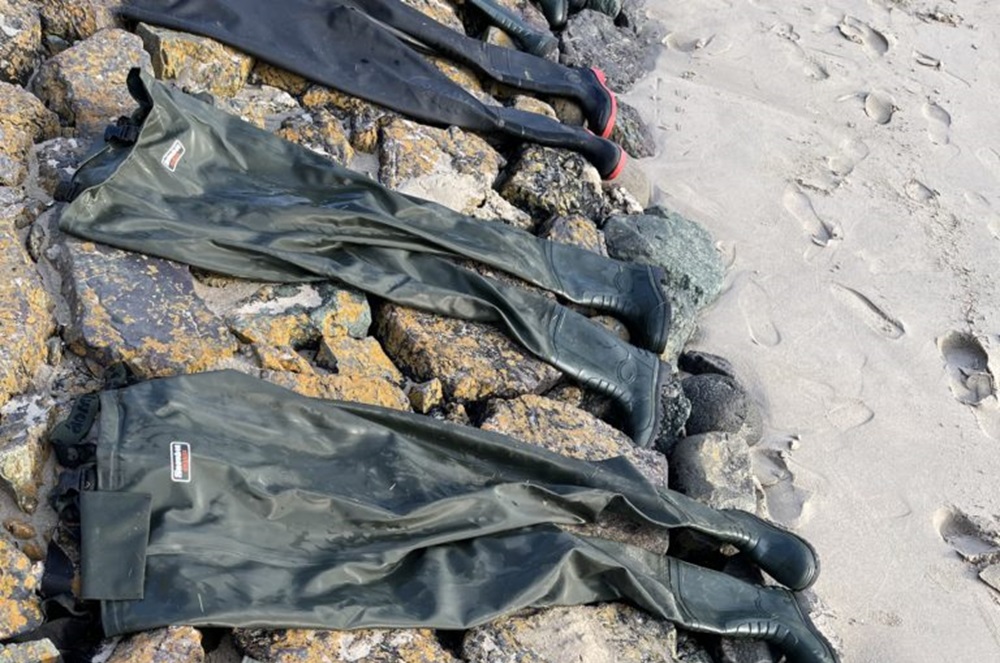
A national treasure
Porthdinllaen is home to one of the largest and and best surviving examples of seagrass meadows in Wales. Seagrass is the only flowering plant that grows and sets seed in the sea; it has narrow, strap-like green leaves and is found in shallow waters through which sunlight can penetrate. Unlike seaweed, which attaches to other substrates such as rocks, seagrass has an underground system of stems or rhizomes by which it anchors and grows through the sandy and environments in which it is found. It can spread over extensive areas forming dense, grass-like meadows: we learnt from Amel, Project Seagrass’ beaming Support Officer, that the size of the seagrass meadow in Porthdinllaen is equal to about forty-six football pitches.
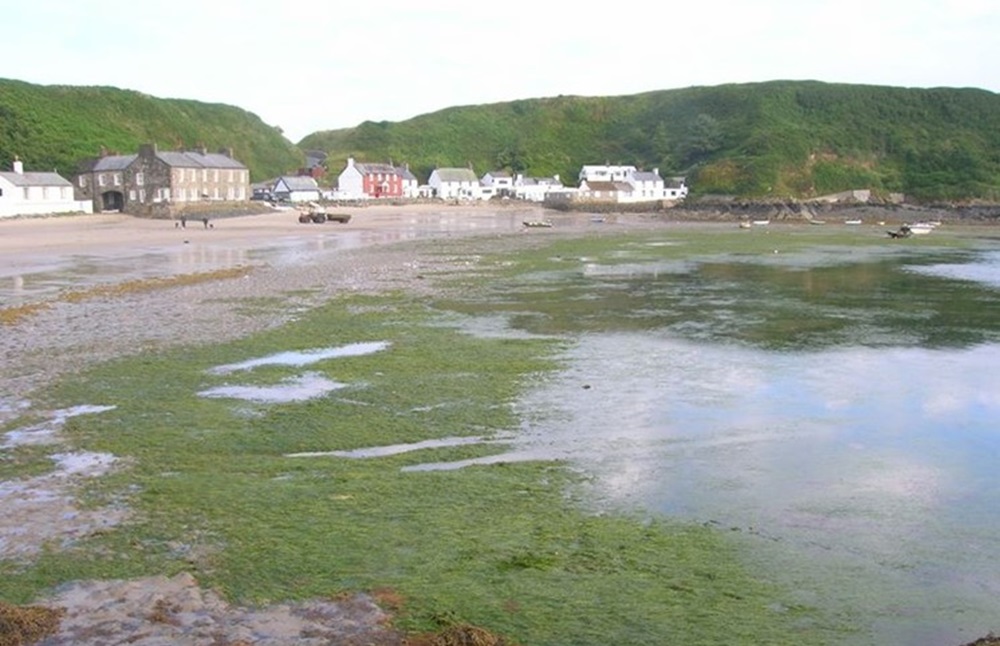
Nursery ground
Seagrass meadows matter. They provide a superb habitat for a multitude of marine creatures and a vital nursery ground for a number of fish species including (at Porthdinllaen) plaice, pollock, sole, saithe and cod. These underwater meadows are also effective carbon sinks, and play an important role in protecting shorelines; they also produce oxygen and filter water which helps to create cleaner coastal environments. According to the World Wildlife Fund, a single hectare of seagrass can support up to 80,000 fish and 100 million invertebrates.
These underwater meadows were once common around the coast of Wales. An article in the Pembrokeshire Herald and General Advertiser, dated January 17th 1862, describes the lively debate at the time about the potential use of seagrass as a ‘staple of manufacture’ instead of cotton – if only a way could be found of ‘separating the fibre from the mucilage which coats it’. It refers to the abundance of seagrass along the west coast of Britain ‘where it flourishes and wastes’, and to the idea of cultivating the plentiful seagrass in Ireland as a possible ‘means not only of re-opening the mills of Lancashire, but furnishing a new and saving industry for Ireland’. Similar reports in other mid-19thC Welsh newspapers mention the use of seagrass by upholsterers for stuffing beds and light furniture, as well as its potential for making paper.
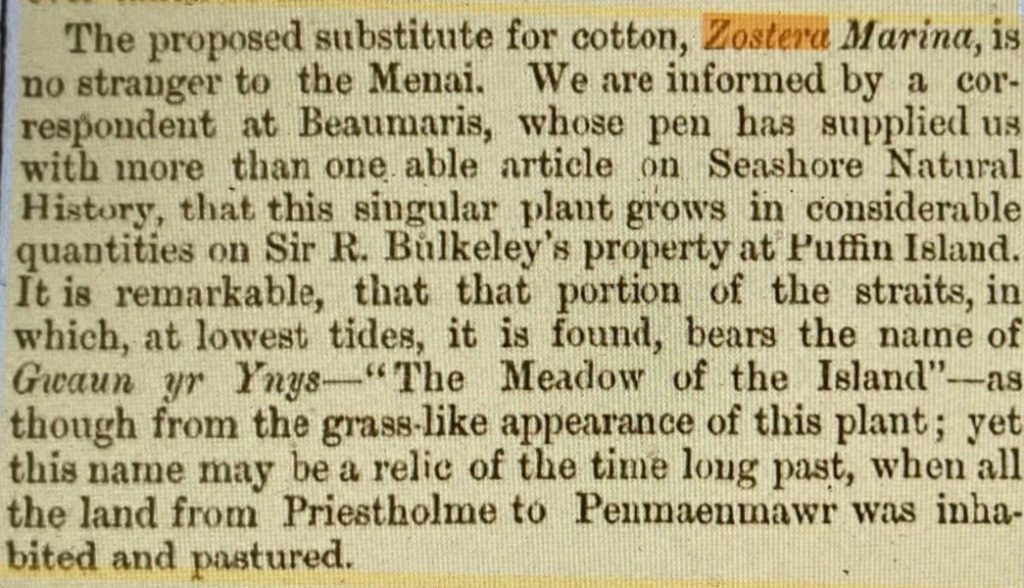
A century of losses
Sadly, Wales has lost around 90% of its seagrass meadow habitat over the past century. A number of factors have contributed to this decline, including land reclamation and industrial development, pollution, the use of vehicles in the intertidal zone and the scarring effect of boat moorings as the chains sweep across the seabed ripping up the plants.
We’re fortunate that Porthdinllaen’s seagrass meadow has remained relatively intact. It could have been a very different story if William Alexander Maddock’s (1773-1828) ambition for creating a port link to Ireland at this precise location had come to fruition. The construction of an embankment at Porthmadog (the ‘Cob’) was not only a key element in Maddock’s plans for reclaiming the Traeth Mawr estuary: he also had an eye on the potential for developing Porthdinllaen as the main shipping port between Wales and Dublin as trade with Ireland grew in the early 19th century – and had hoped that the Cob would play a part in this development.
But it was not to be. Holyhead won the day – there is a tale that sediment samples from both locations were switched at the last moment and that the final decision was therefore based on false information – but the construction of Telford’s suspension bridge (Pont y Borth), completed in 1826, and then the completion of the Britannia Bridge in 1850, sealed the fate of both places. Life in Porthdinllaen, centred largely around the important herring fishery, boat-building and other maritime activity, continued much as before.
Today, thanks to its healthy seagrass meadow, Porthdinllaen has a new, and vitally important role as exporter of seagrass seed, a commodity whose full value we’re only beginning to fully recognise. Aided by a grant of £1 million from the Lottery Heritage Fund, Project Seagrass is aiming to restore 10 hecatres of seagrass meadow habitat at a number of sites in Gwynedd and Anglesey, with Porthdinllaen acting as a donor site for each one of these new areas. It may sound a very small contribution, given the astounding loss of seagrass habitat over the past 100-150 years, but Project Seagrass’ ambition is to scale up, to work fast and to work both with the science and with local communities across the world in the face of current climate and nature challenges.
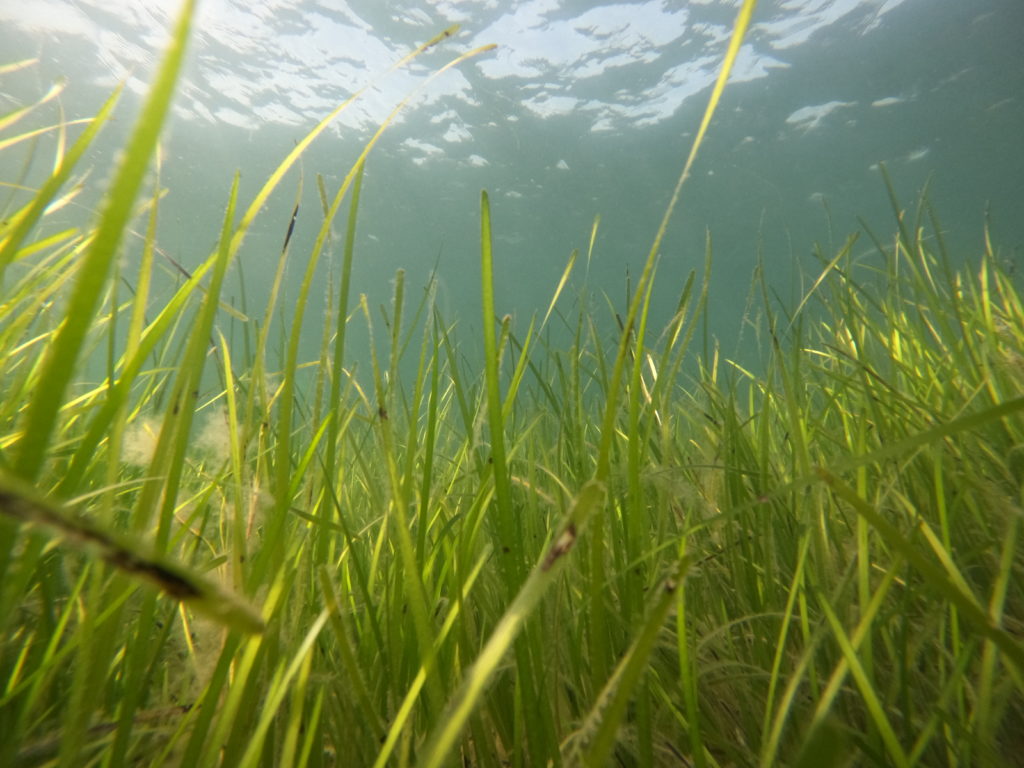
Getting wet and stuck in
During our briefing session we’re told by Amel that the aim had been to collect 1.5 million seagrass seeds this August, and that the target had already been met. The pressure was off then, on this final day of seed-collecting. “Anything you find will be a bonus – just enjoy yourselves”…was the final message and off we went, plodding into the shallows armed with nothing but a few mesh bags to gather our finds.
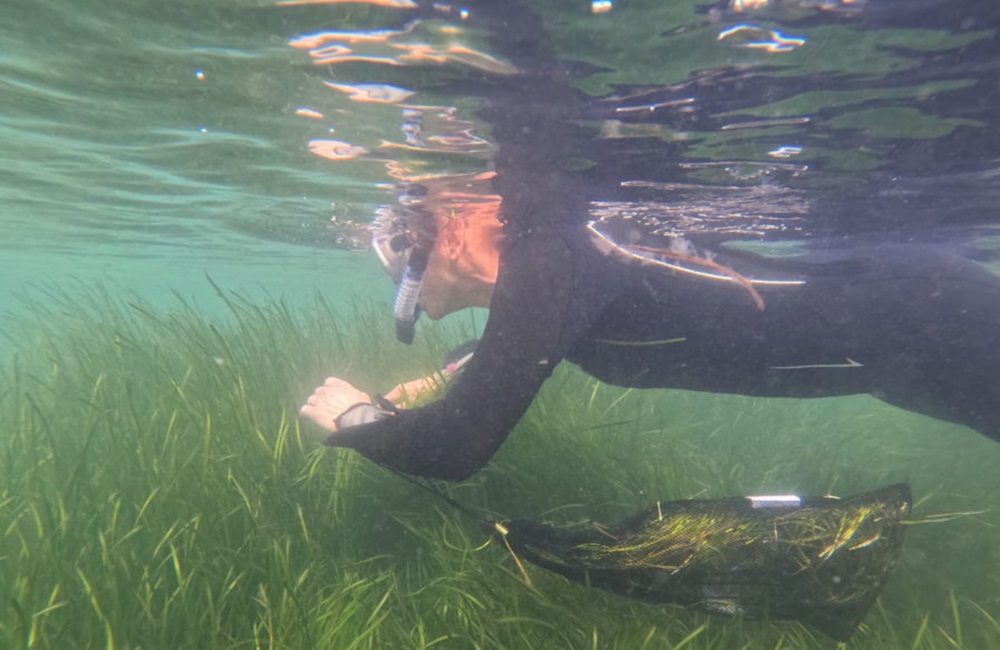
Our task
Our task was simply to find sections of seagrass plants that carried a row of tiny, hard seeds and to pinch away these fragments without removing the whole plant. The wader-gatherers amongst us were paired up and off we went, plunging our arms into the cold water and drawing our hands through the soft, waving tresses of green leaves to search for these minute seeds: it was the closest experience I’ve ever had to searching for headlice in my son’s hair on a trip to Disneyland Paris many years ago. Fragments of conversation floated across the sea’s glittering surface while the snorkelers bobbed slowly and silently around us, apparently lifeless in their lumpy black neoprene. From the shore, Porthdinllaen’s fresh visitors looked on curiously at this strange gathering, and walked on.
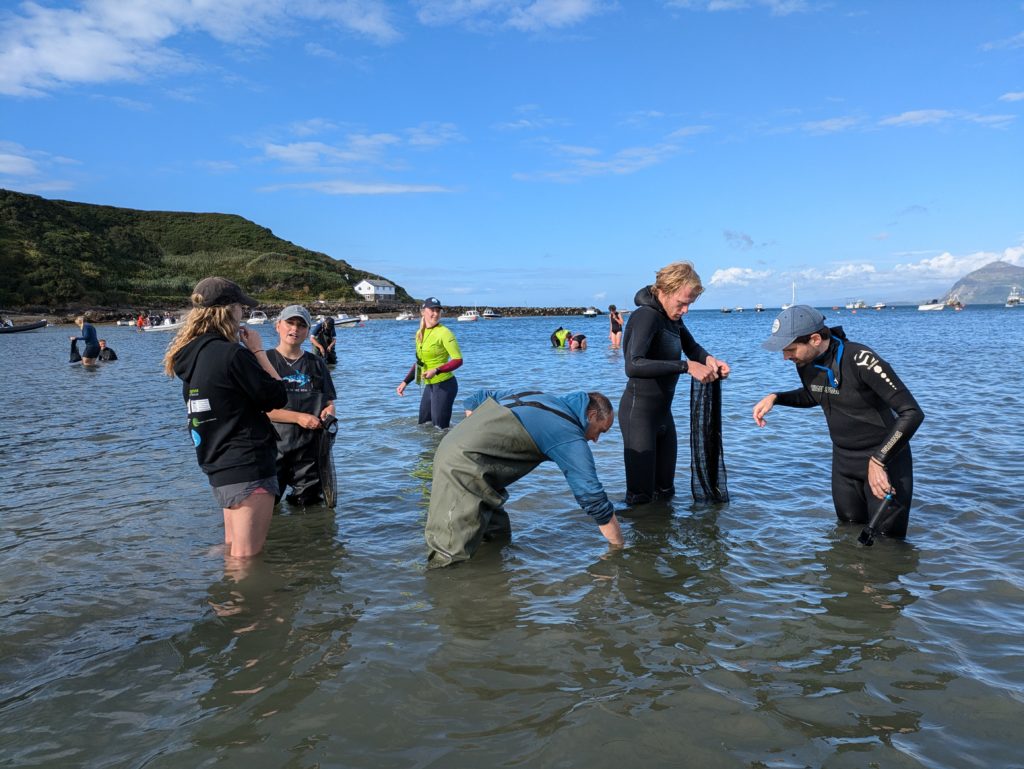
The pickings were slim. It was the tail end of a fortnight’s worth of volunteering, and we reckoned the shallowest water had been gleaned pretty effectively. But at least we managed to contribute a few bagfuls to the tanks of seed-laden seagrass fragments that were being safely kept in Porthdinllaen’s seawater, before being taken back down to South Wales for processing and growing on for replanting around north Wales’ shores.

By 9.30am I was back at home, sitting at my desk with a cup of coffee and feeling energised, enthused – and grateful for such a memorable morning.
Project Seagrass will be back in Porthdinllaen in August 2025, welcoming volunteers once again to help out with this important and fascinating work.
Support our Nation today
For the price of a cup of coffee a month you can help us create an independent, not-for-profit, national news service for the people of Wales, by the people of Wales.




